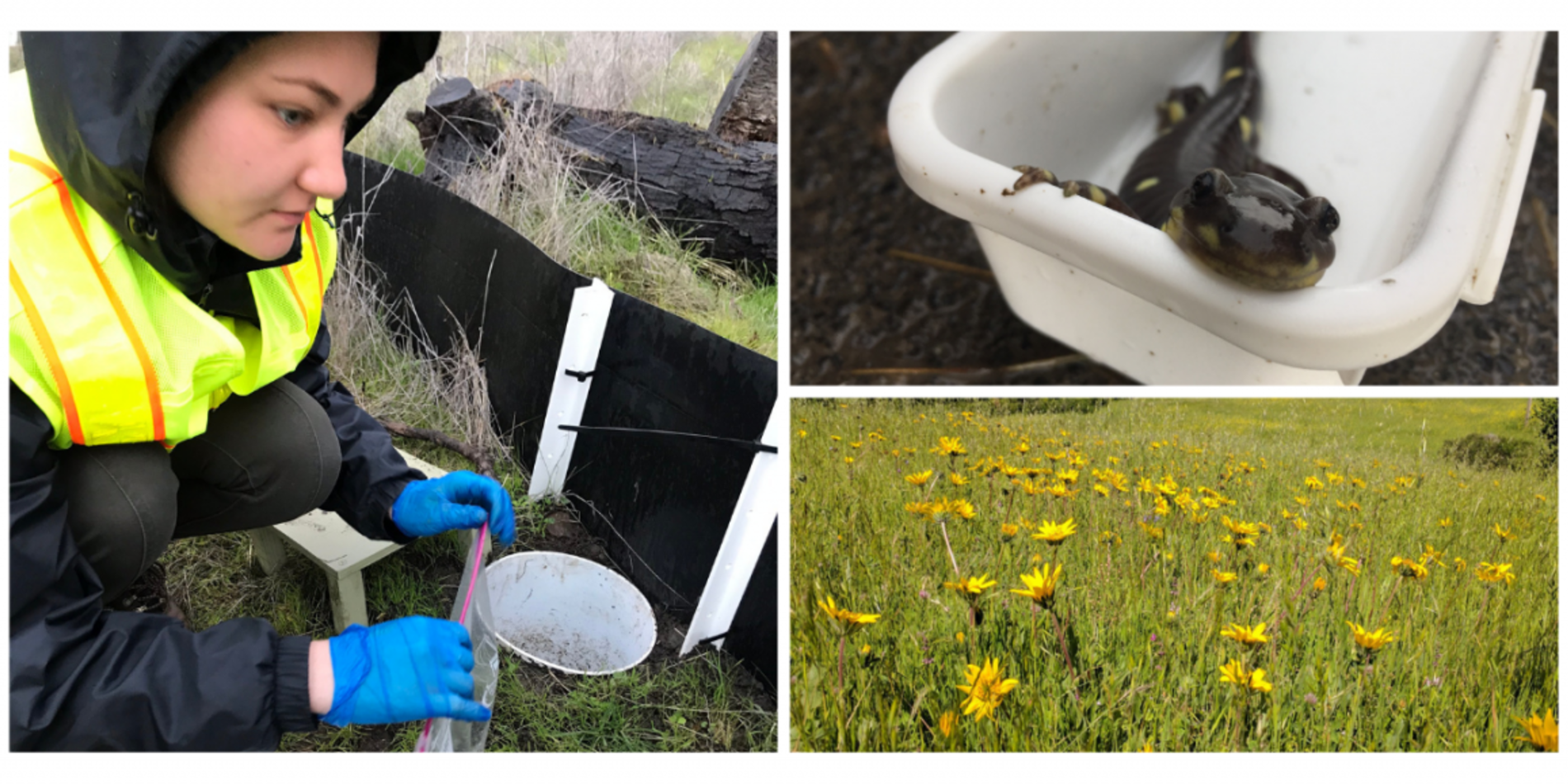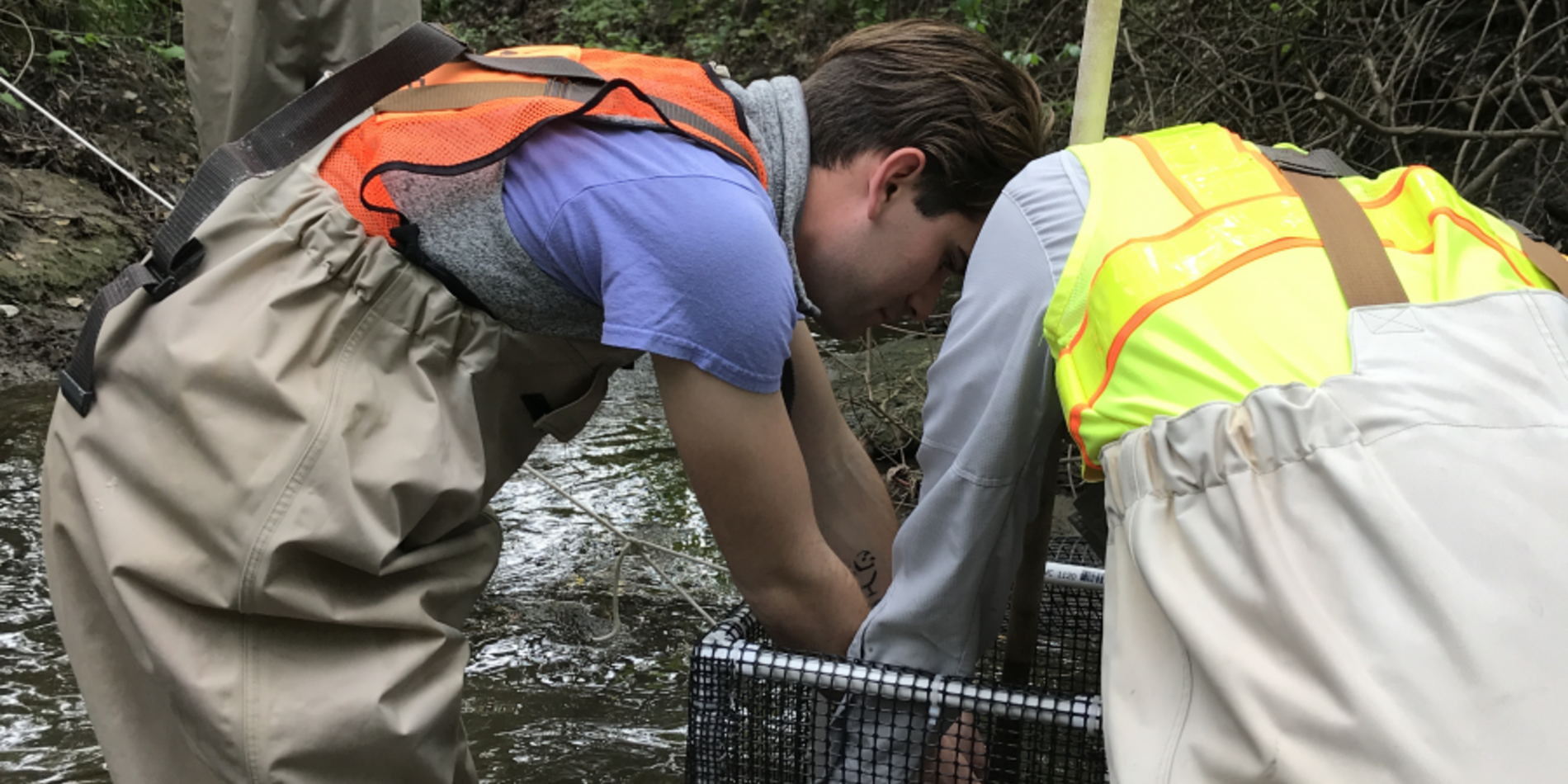The Dirt: Recent Articles & News

In Search of Threatened Frogs on the Red Eye Shift
By Sierra Garcia
Late August twilights have an air of ritual in the hills surrounding Stanford. Light fades away over a quiet campus; raccoons, possums, and other furry quadrupeds perk up; and Richard Seymour wades through poison oak and pools of waist-deep water in search of California red-legged frogs.
California red-legged frogs (CRLF) are a threatened species, and as a species included in Stanford’s Habitat Conservation Plan, the Conservation Program works to monitor and protect them year-round. But the end of summer is a special season. The streams that crisscross the foothills slow to trickles, and deep pools shrink to puddles. Adult frogs congregate near the remaining patches of deep water, while tadpoles rush to sprout legs and lose their tails. It’s the best time of year to count frogs and learn how the population is doing—and that’s exactly what Seymour and the Conservation Program have done each summer since 1996, the same year the species was first listed as threatened. The adult frogs are mostly nocturnal, so nighttime is best for spotting them perched along the stream banks...

First Impressions: Working as a Conservation Technician
My first day with the Conservation Program was actually as a volunteer. We were weeding Dittrichia graveolens, a tough stemmed, yellow flower with a pungent, sticky sap that coated its leaves and short stalks. As an invasive, Dittrichia, or stinkwort, is known as a noxious weed and outcompetes native plants. For all its other crimes, I don’t remember it living up to its name: the smell wasn’t all that bad, somewhere between a pine tree and a cleaning product, and though the sun beat down, the day was pleasant, and the buckets filled steadily with a sticky green mesh that sprung up against the pressure of our gloved hands with each new handful...

Despite Challenges, Threatened California Red-Legged Frogs Reproduce in Stanford Creeks
By Johannah Farner
In the first weeks of spring, California red-legged frogs (Rana draytonii) emerge from subterranean refugia to warm their cold blood in the sun and lay eggs in deep, still pools of water with plenty of good hiding places. Some California red-legged frogs travel distances greater than two miles over land in search of suitable homes, but even their impressively long and spotty legs have been challenged by habitat loss. This species’ current classification as threatened under the federal Endangered Species Act is justified by a combination of factors including low habitat availability, introduced predators, and disease...
